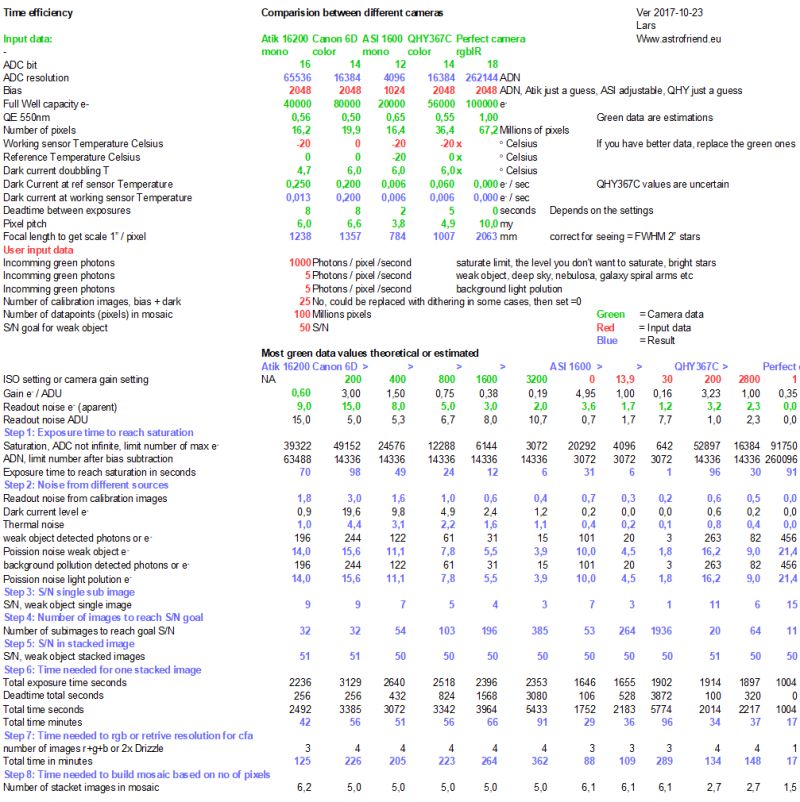4: High Dynamic, example 2
Here I have changed one parameter, the maximum incoming photon flow that I don't want to saturate, now 1000 photons per pixel and second:

Compare
these values with Example 1 above, see Step 3: the S/N ratio of sub images and step 6: how many minutes it took to do the sequence.
If you have a camera with mechanical shutter you shouldn't do many short exposure photos, it has a limited lifetime and will broke.
You must have a camera with electronic shutter.
The ZWO has USB3 ports, that can give very high speeds and can reduce the dead time a lot but it also heat the camera.
Which camera is best?
I will say all of them are very good, but it depends very much of what you will do and what telescope and environment you have.
|
